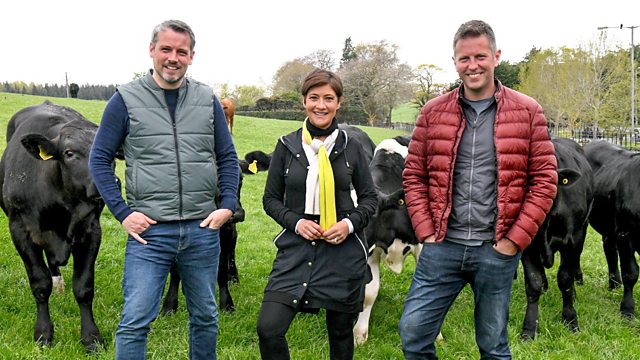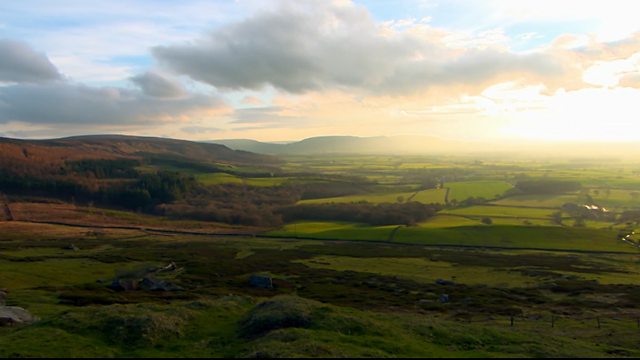Countryfile – Ashdown Forest – A century has passed since the world was first introduced to a beloved fictional character, Winnie-the-Pooh, through the pages of the children’s poetry book “When We Were Very Young.” This year marks the 100th anniversary of Winnie-the-Pooh’s entrance into the hearts and imaginations of children and adults alike. To commemorate this milestone, Matt Baker and Charlotte Smith ventured to Ashdown Forest in East Sussex, an area that served as the enchanting backdrop for Pooh’s adventures in the 100 Aker Wood. Their journey aimed to delve deeper into the history of this ancient woodland, exploring its connection to the stories that have captivated generations.
Ashdown Forest, known for its sprawling heaths and dense woods, holds a special place in the legacy of Winnie-the-Pooh. It was here that author A.A. Milne found inspiration for the magical setting of his stories. Matt and Charlotte’s exploration began with a playful game of Pooh sticks on the iconic Pooh Sticks Bridge, a ritual that allows visitors to connect with the simplicity and joy found in Milne’s work. Following this nostalgic activity, Matt embarked on an enlightening bear hunt, not for actual bears, but in pursuit of stories and landmarks tied to the lovable bear and his creator. Accompanied by Neil Reed, a Pooh enthusiast and local museum curator, Matt uncovered fascinating insights into A.A. Milne’s life and the real-life inspirations behind the forest’s landmarks immortalized in the Pooh stories.
The adventure didn’t stop there. Matt joined a dedicated team of volunteers committed to preserving the forest’s delicate lowland heaths, an ecosystem vital to the area’s biodiversity. Meanwhile, Charlotte embarked on a different kind of hunt with Sandy Williamson, the deer management coordinator for High Weald. Together, they utilized military-grade drones to survey deer populations within the forest. This innovative approach aids in the effective management of deer numbers, ensuring the health and sustainability of the woodland environment.
Beyond the enchanting world of Winnie-the-Pooh and Ashdown Forest, the narrative extends to the Cotswolds, where Adam Henson contributes to environmental conservation efforts. Adam’s work focuses on reversing the decline of hedgerows, a critical component of the British countryside that supports wildlife diversity and ecological balance. His commitment to restoration projects highlights the broader theme of preserving and enhancing natural habitats across the country.
Countryfile – Ashdown Forest
Charlotte’s investigation also sheds light on the evolving relationship between development and environmental preservation in England. She explores how housebuilders are now mandated to consider ecological impact, aiming to enhance rather than detract from the natural world when constructing new homes. This shift towards more sustainable practices reflects a growing recognition of the importance of integrating environmental considerations into development projects.
The story of Winnie-the-Pooh’s centennial celebration is more than a tribute to a cherished character; it is a reflection on our connection to nature and the importance of safeguarding it for future generations. As Matt and Charlotte’s journey through Ashdown Forest illustrates, the legacy of Winnie-the-Pooh extends beyond the pages of a book. It encompasses a broader narrative of conservation, stewardship, and the enduring power of stories to inspire love and respect for the natural world.
In commemorating a hundred years of Winnie-the-Pooh, we are reminded of the joy and wonder that nature holds, the inspiration it has provided to storytellers like A.A. Milne, and the collective responsibility we share in preserving these treasures. Whether through the playful game of Pooh sticks, the conservation of ancient heaths, or the innovative management of wildlife populations, the spirit of Winnie-the-Pooh and his enchanted forest continues to influence and motivate efforts to protect our planet’s precious ecosystems.
As we look back on a century of adventures with Pooh and his friends, we also look forward to the future, inspired by the stories and the real-world efforts to maintain the beauty and vitality of places like Ashdown Forest. It is in these magical landscapes that the tales of Winnie-the-Pooh find their roots, and it is through our dedication to conservation and sustainability that they will endure, captivating the hearts and imaginations of generations to come.
A Century in the Hundred Acre Wood: Pooh’s Legacy and the Future of Britain’s Forests
One hundred years ago, a portly bear named Winnie-the-Pooh lumbered into our hearts, forever etching his name in literary history. His whimsical adventures in the 100 Aker Wood, inspired by the ancient woodlands of Ashdown Forest in East Sussex, have captivated generations. Today, Matt Baker and Charlotte Smith embark on a journey to explore the real-life magic of this iconic landscape and delve into the enduring legacy of Pooh and his creator, A.A. Milne.
Their adventure begins with a playful “Pooh sticks” competition on the real-life bridge that inspired one of Pooh’s most beloved games. This lighthearted moment seamlessly transitions into a deeper exploration with local museum curator Neil Reed, a fellow Pooh fanatic. He guides them through the forest, showcasing the landmarks immortalized in Milne’s stories – from the blustery Heffalumps’ trap to the serene Heffalump Woozle. Reed paints a vivid picture of Milne’s life, intertwining it with the history of the forest, revealing how this natural haven fueled the author’s imagination and birthed Pooh’s world.
But Ashdown Forest is more than just a literary landmark. It’s a vital ecosystem facing contemporary challenges. Matt joins a dedicated team of volunteers working to preserve the forest’s precious lowland heaths, battling invasive species and promoting biodiversity. Witnessing their tireless efforts underscores the crucial role these volunteers play in safeguarding the forest’s health and the legacy it embodies.
Meanwhile, Charlotte embarks on a quest of her own, tracking deer populations with High Weald’s deer management co-ordinator Sandy Williamson. Deploying high-tech military-grade drones, they soar above the canopy, painting a fascinating picture of the forest’s hidden dynamics. Williamson explains how innovative data collection helps manage deer numbers, ensuring a balanced ecosystem where Pooh’s woodland friends can thrive.
The journey transcends Ashdown Forest, venturing into the rolling hills of the Cotswolds. Here, Adam Henson, another passionate advocate for the countryside, works diligently to reverse the decline of hedgerows. These vital arteries of the rural landscape provide crucial habitat for countless species and connect diverse ecosystems. Henson’s dedication highlights the growing concerns about habitat loss and the urgent need for sustainable land management practices.
Finally, Charlotte investigates a groundbreaking initiative transforming the construction industry. New regulations mandate that housebuilders in England must now enhance biodiversity when building new homes. This shift signifies a crucial step towards a future where development and environmental protection coexist.
As Matt and Charlotte’s adventure concludes, the 100 Aker Wood emerges as more than just a fictional setting. It becomes a potent symbol of the delicate balance between nature and human impact. From playful Pooh sticks to cutting-edge drone technology, the narrative weaves together environmental challenges, innovative solutions, and the enduring power of storytelling. Ultimately, it reminds us that protecting our natural heritage is not just about preserving the landscapes that inspire beloved characters, but about safeguarding the very ecosystems that sustain life itself.




